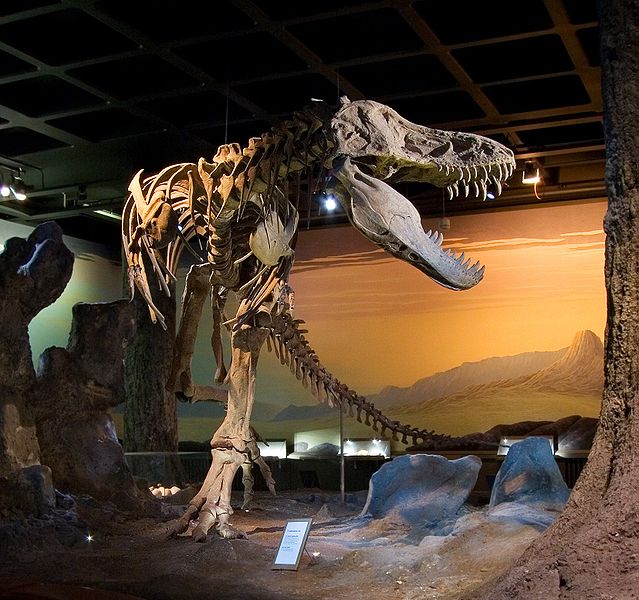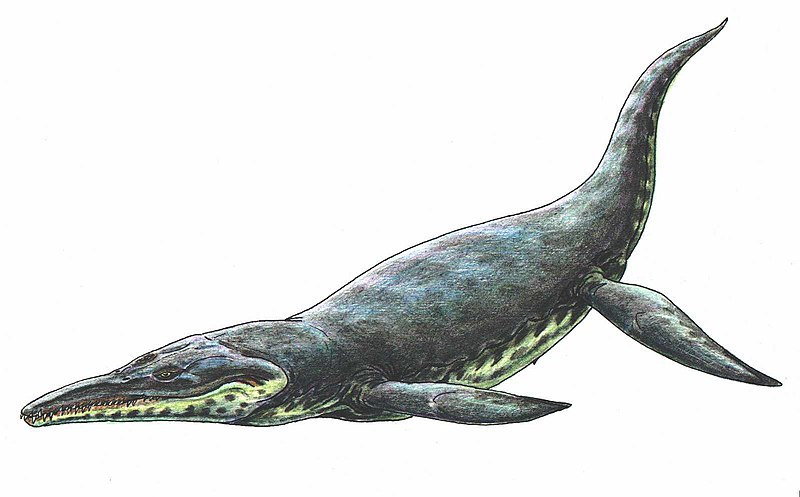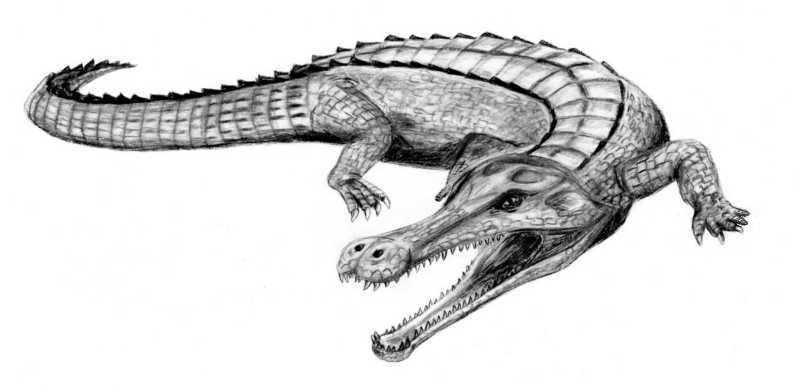Welcome back to my blog everyone! Like last week, I don't have many
updates today, but we'll go through the few I do have and we'll get
to today's non-fiction article.
If you read last week's post, you'll recall that my latest
stop-motion series episode from the I'm working on (called Planet
of the Dinosaurs), The Tropical Poles was just released.
Remember that this is only the second episode, so we still have a lot
to cover in this series as there are four more episodes. The third
episode of the series, called Back to the Jurassic, is roughly
55% complete. I'll let you know how progress is going as the weeks
pass.
This week, Joy was not able to write an article, so that's why I
wrote one for today. I hope you like it:
In the Bible, there is a book appropriately named Job, after the man who the account focuses on. And if you know the story of Job, you'll recall that Job went through a time of severe testing and trials that would cause many to be angry with God. During this time, God came to Job to remind him just how great God is as Creator. During this conversation, God brought up many different species of animals, most of which are identifiable without question, but there are two in particular that cause trouble for many, one of which we're going to look at today – it's called Leviathan. As it's described in the 41st chapter of Job, we learn that this creature was an awe-inspiring beast that was massive and terrifying, even to the brave and mighty. In Job 41, God is describing Leviathan to Job as an example of something He created that is beyond mankind's ability to compete with.
For a long time, people have wondered what kind of animal Leviathan was and they've come up with many possible candidates. Today, we'll look into this matter and see which candidate best fits Leviathan!
First of course, we must see exactly what scripture has to say about Leviathan. Job 41:8-34 says:
“If you lay a hand on it, you will remember the struggle and never do it again! Any hope of subduing it is false; the mere sight of it is overpowering. No one is fierce enough to rouse it . . . I will not fail to speak of Leviathan’s limbs, its strength and its graceful form. Who can strip off its outer coat? Who can penetrate its double coat of armor? Who dares open the doors of its mouth, ringed about with fearsome teeth? Its back has rows of shields tightly sealed together; each is so close to the net that no air can pass between. They are joined fast to one another; they cling together and cannot be parted. Its snorting throws out flashes of light; its eyes are like the rays of the dawn. Flames stream from its mouth; sparks of fire shoot out. Smoke pours from its nostrils as from a boiling pot over burning reeds. Its breath sets coals ablaze, and flames dart from its mouth. Strength resides in its neck; dismay goes before it. The folds of its flesh are tightly joined; they are firm and immovable. Its chest is hard as rock, hard as a lower millstone. When it rises up, the mighty are terrified; they retreat before its thrashing. The sword that reaches it has no effect, nor does the speak or the dart or the javelin. Iron he treats like straw and bronze like rotten wood. Arrows do not make it flee; slingstones a like chaff to it. A club seems to it but a piece of straw; it laughs at the rattling of the lance. Its undersides are jagged potsherds, leaving a trail in the mud like a threshing sledge. It makes the depths churn like a boiling caldron and stirs up the sea like a pot of ointment. It leaves glistening wake behind it; one would think the deep had white hair. Nothing on earth is its equal– a creature without fear. It looks down on all that are haughty; it is king over all that are proud.”
So, what characteristics of this creature do we get from these passages? Here's a list:
- It was an immensely strong beast (Job 41:12, 25-24)
- Leviathan was mostly an aquatic creature, but it did come to land (Job 41:30-32)
- It couldn't be captured due to its strength and ferocity (Job 41:3-6,9)
- No one wanted to fight this beast more than once (Job 41: 8-10)
- It had a huge jaw with sharp teeth (Job 41:14)
- Leviathan could literally breathe fire and smoke (Job 41:18-21)
- This creature had strong armor in the form of an impenetrable coat, or “rows of shields” as Job puts it (Job 41:13, 15-17)
- Human weapons were useless when confronting this beast (Job 41:1-2, 7, 26-29)
Many Bible versions have attempted to identify Leviathan as some sort of crocodile. In fact, if you look at the footnotes in many Bibles referencing Job 41:1, they will say something like: “Probably a crocodile.” Many people think Leviathan was indeed a crocodile, but let's explore this. While it is true that crocodiles are strong, semi-aquatic beasts, have a fierce set of jaws and have tough armor, crocodiles normally live in rivers and lakes (one exception would be the Saltwater Crocodile, which often ventures out to sea), while Leviathan is said to have spent time in the sea. Also, the scales on a crocodile's back, while tough, can be penetrated by relatively “simple” human weapons, contrary to Leviathan’s armor, which is described more as shields than scales. Do you remember when the Bible described Leviathan as being so ferocious that no one would do battle with it more than once? Well, if the modern crocodile was the Leviathan described in the Bible, Steve Irwin, better known as “The Crocodile Hunter”, would have been out of a job! People can catch AND kill crocodiles with relative ease. And as if all this evidence wasn't enough, the Bible describes Leviathan as being able to actually breathe fire! What croc do you know that fits that description? Leviathan was not the modern crocodile!
No other living animal fits the description of Leviathan, so we're forced to look at extinct animals instead to find Leviathan’s probable identity (much to the displeasure of Long-Age-believers). Some have suggested that Leviathan was one of the greatest predators ever to walk the face of the earth – Tyrannosaurus rex! After all, even the mighty would probably scared if they came across this beast! But there are some major problems with this theory as well. Dinosaurs were terrestrial creatures, while Job 41:30-32 clearly demonstrates that Leviathan was largely aquatic. T. rex stuck with hunting land-based prey. So we know that T. rex was not the Leviathan God described in Job.
 |
| Tyrannosaurus rex weighed 7 tons and was over 42 feet in length. Did you know T. rex had the strongest bite force of any animal ever measured? |
Some have attempted to assign Leviathan to other extinct marine creatures, such as the ferocious pliosaurs and mosasaurs. Pliosaurs were short-necked members of the order Plesiosauria and depending on the species, ranged from smaller individuals, such as the 15-foot Macroplata, to enormous monsters such as the 21-foot Liopleurodon, the 30-foot Kronosaurus and the 40+-foot long Pliosaurus. Many species of pliosaurs had jaws that were over 10 feet in length, and had pearly whites that could grow about a foot in length! Mosasaurs were marine lizards ranging from the meter-long Dallasaurus, to giant marine assassins such as Tylosaurus and Mosasaurus, each measuring over 50 feet in length. Both pliosaurs and mosasaurs were ferocious predators and seem to fit the description of Leviathan perfectly . . . except for one tiny detail: mosasaurs and pliosaurs were 100% aquatic, while Leviathan was semi-aquatic. The Bible explains how, “Its undersides are jagged potsherds, leaving a trail in the mud like a threshing sledge.” This creature was able to come on land. Pliosaurs and mosasaurs would probably be in the same state as a beached whale if they tried to come on land. In fact, God made pliosaurs and mosasaurs so at home in the water, that they even gave birth there.
 |
| Liopleurodon was a ferocious marine reptile! |
 |
| Kronosaurus was originally estimated to be over 65 feet long! But recent research has proven that it was only around 30 feet -- still big enough to be a killer! |
 |
| Mosasaurs were a lot like the monitor lizards we have today, but larger and they had flippers. They also ate anything that moved, sharks, turtles, fish, birds and even other mosasaurs! |
 |
| The skull of Super Croc is almost six feet in length and had dozens of sharp teeth. |
At over 40 feet in length, it was one of the largest crocodilians that ever existed. It weighed at least 10 tons and the largest known skulls of Sarcosuchus were five feet long! Another amazing feature of this croc was the rows of osteoderms, or scutes along its neck, back and tail. Each bony scute was a foot long and many scientists describe it as looking like roofing tiles. This provided Super Croc impenetrable protection (sounding familiar?).
 |
| Sarcosuchus had foot-long scutes running down its neck, back and tail, making it almost impenetrable. |
 |
| What was the bulla of Sarcosuchus used for? |
In the Bible, Leviathan is described as having the ability to breathe fire. Perhaps the bulla of Sarcosuchus was used to help it accomplish this feat! We don't know for sure, but this isn't out of the realms of scientific possibilities. Some people might believe that this sounds a bit far fetched, but let's explore this a little further.
There's a modern beetle known as the bombardier beetle, and believe it or not, God has designed a special feature for this critter to help it escape danger. When a predator such as a spider or carnivorous ant approaches the beetle, hoping to have it as a next meal, the beetle points its tail in the direction of the attacker and it shoots out spurts of hot chemicals that send an attacker packing! If a little beetle can do something like this, what about a 10-ton Sarcosuchus? And after all, it wouldn't be hard for God Almighty to create a fire-breathing creature anyway, I mean, He did create everything after all!
 |
| The bombardier beetle is able to fire noxious chemicals at its enemies through its tail (it's a wonder they didn't name it the "fire-blasting beetle"). |
We can't say for sure if the mighty Leviathan described in the Bible was a Sarcosuchus, but we can definitely say with certainty that it's a great candidate! And Sarcosuchus was a force to be reckoned with, either way. It was so large, that it was probably able to take down medium-sized dinosaurs! Leviathan was definitely an amazing creature God has created to exist on the planet, and it's a sad thing that this creature went extinct. Or perhaps, considering those fierce jaws and fire-breath, maybe it's just as well!
I hope you enjoyed this week's article and I hope you'll stop by next
week to learn more about the wonderful world of nature. Bye!
PS: To post a comment (this is highly
encouraged), please simply click the post you wish to comment on,
scroll to the bottom of the page and put what you wish to say or ask
in the comment box. Then in the box below the comment box choose who
you’re going to comment as. And then click preview or
publish. If you aren’t signed into Google, you’ll be asked
to type in a word and a number in the space provided. Type the word,
put a space and then put the number. Then your comment is on the
blog!
PS 2: Have a puzzling question about
animals (including dinosaurs), myself, my latest book, my stop-motion
movies, Creation or etc? Please post your question as a comment or
send me an email at animaladventures@aol.com.
PS 3: What’s the latest scoop? Check
it out at SMILEY’S
NEWS.
PS 4: Be sure to comment on the latest
stop-motion movies too, this will help me improve them

Thanks for sharing, nice post! Post really provice useful information!
ReplyDeleteFadoExpress chuyên dịch vụ chuyển phát nhanh siêu tốc đi khắp thế giới, nổi bật là dịch vụ gửi hàng đi mỹ, gửi hàng đi úc uy tín, giá rẻ.